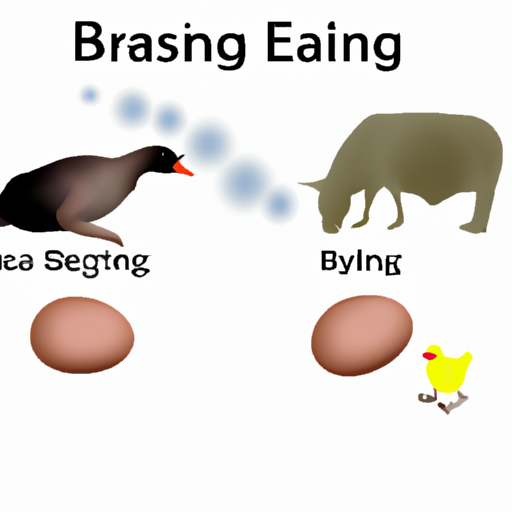 Introduction:
Introduction:
The development of life within eggs is a remarkable phenomenon observed across various animal species. Embryos undergo intricate processes, including respiration, despite being confined within a protective shell. This article delves into the intricate mechanisms of respiration in eggs, exploring different adaptations and strategies employed by diverse organisms to ensure the availability of oxygen necessary for their development.
1. Types of Eggs:
Before diving into the respiration process, it is crucial to understand the different types of eggs and their unique characteristics. There are three main types of eggs observed in the animal kingdom: amniotic eggs, fish eggs, and amphibian eggs. Each type exhibits distinct adaptations to facilitate respiration.
1.1 Amniotic Eggs:
Amniotic eggs are laid by reptiles, birds, and monotremes. These eggs possess a protective shell that allows gas exchange while maintaining a controlled internal environment. The shell consists of pores, which play a vital role in respiration.
1.2 Fish Eggs:
Fish eggs, which include both bony fish and cartilaginous fish, are typically laid in aquatic environments. These eggs are enclosed within a transparent, gelatinous envelope that permits the exchange of gases with the surrounding water.
1.3 Amphibian Eggs:
Amphibians, such as frogs and salamanders, lay their eggs in water or moist environments. Amphibian eggs lack a hardened shell, and their respiration mechanism relies on the permeability of their jelly-like covering, allowing for oxygen absorption.
2. Respiration in Amniotic Eggs:
Amniotic eggs have evolved various mechanisms to fulfill the respiratory requirements of developing embryos. The following adaptations ensure the oxygen supply within these eggs:
2.1 Shell Porosity:
The shell of amniotic eggs is semipermeable, allowing for gas exchange. Oxygen from the external environment diffuses through the shell pores into the egg, while carbon dioxide produced during respiration exits through the same pathway. Pore density and size vary between species, affecting the efficiency of respiration.
2.2 Chorioallantoic Membrane:
Within the amniotic egg, the chorioallantoic membrane plays a crucial role in respiration. This highly vascularized membrane facilitates gas exchange between the embryo and the environment, allowing oxygen to diffuse into the developing organism.
2.3 Air Chambers:
Amniotic eggs often contain air chambers that provide an additional source of oxygen for the developing embryo. These chambers are located near the blunt end of the egg and allow for gas exchange between the embryo and the external environment.
3. Respiration in Fish Eggs:
Fish eggs, which are primarily laid in water, have unique adaptations to ensure oxygen availability for the embryo’s development:
3.1 Water Permeability:
The gelatinous envelope surrounding fish eggs is semi-permeable, enabling the exchange of gases with the surrounding water. Oxygen dissolved in the water diffuses into the egg, while carbon dioxide exits through the same pathway.
3.2 Oxygen-Rich Environment:
Female fish often lay their eggs in areas with high oxygen levels, such as well-oxygenated streams or near aquatic vegetation. This ensures an ample supply of oxygen for the developing embryos.
4. Respiration in Amphibian Eggs:
Amphibian eggs are typically laid in water or moist environments, and their respiration mechanisms are adapted accordingly:
4.1 Permeability of the Egg Envelope:
The jelly-like covering of amphibian eggs allows for gas exchange with the surrounding environment. Oxygen diffuses through this permeable envelope into the embryo, while carbon dioxide exits in the opposite direction.
4.2 Oxygen Absorption through Gills:
Some amphibian species, especially those living in aquatic environments, possess gill structures during the embryonic stage. These gills enable the direct absorption of oxygen from the water, facilitating respiration until the embryo develops lungs.
Conclusion:
The respiration process within eggs is a remarkable adaptation that allows embryos to acquire the necessary oxygen for their development before hatching. From the semipermeable shells of amniotic eggs to the gelatinous envelopes of fish and amphibian eggs, each species has evolved unique mechanisms to fulfill their respiratory requirements. Understanding these processes not only sheds light on the incredible diversity of life but also highlights the adaptability and resilience of animals in various environments.
